It’s no secret that the kitchen can be a dangerous place. Every year, thousands of people are injured in kitchen-related accidents. Many of these accidents could be prevented with a little bit of caution and common sense. In this article, we will discuss some tips for preventing falls in the kitchen. We will cover everything from basic safety precautions to more specific tips for avoiding common hazards. So please read on, and stay safe in the kitchen!
Why is the Kitchen Such a Common Place for Fall Incidents?
Not many people think about the kitchen as a place where they might fall. After all, we walk through our kitchens every day without incident. But the truth is that kitchens are one of the most common places for falls to occur, especially among older adults. There are actually a few reasons for this.
Wet and greasy floors
One of the most common causes of kitchen falls is wet or greasy floors.
Spills happen all the time, whether we’re cooking or cleaning up.
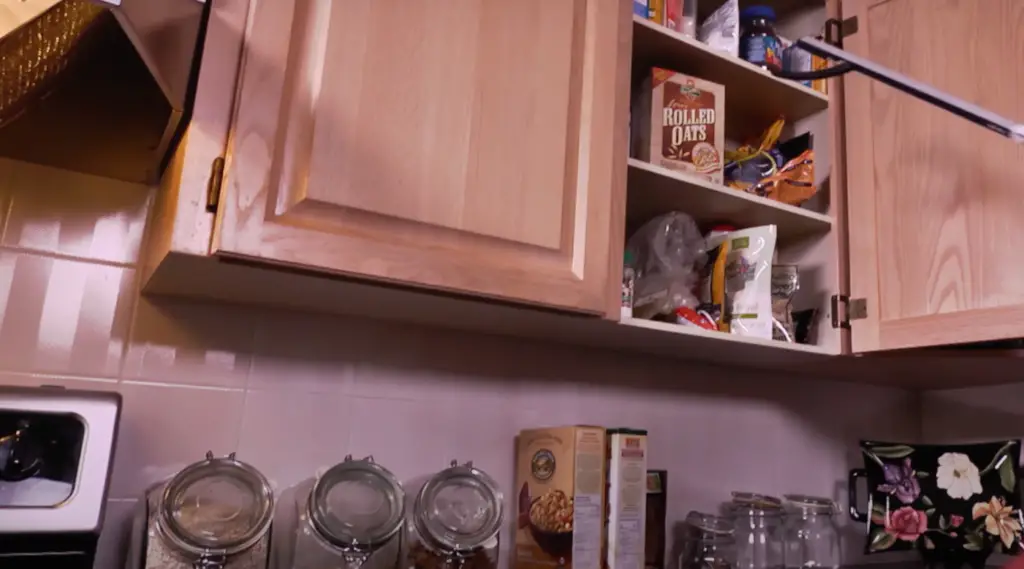
Kitchen floors require to be cleaned and waxed regularly. Because of this however, they can become slick and dangerous. Moisture, puddles of grease, and even wet shoes can make your kitchen floor a hazard.
Poor lighting
One of the main causes of falls in the kitchen is poor lighting. We often don’t realize how important good lighting is until we can’t see properly. If your kitchen isn’t well-lit, it increases the chances that you’ll trip over something or miss a step.
For this reason, it’s important to have good lighting in your kitchen so you can see what you’re doing. This is especially true if you’re cooking with sharp knives or hot stovetops.
Lack of carpeting
Carpets can help to cushion a fall, but most kitchens don’t have them. This leaves hard surfaces like tile and linoleum, which offer no give if you should happen to fall. In addition to that, they make it less likely for you to slip in the first place.
Carpets and mats aren’t placed in the kitchen often because they can be difficult to clean. If you have an eating area in your kitchen, however, placing a mat under the table can help to prevent falls.
The frequency of spills
One of the most obvious dangers in the kitchen is a wet or greasy floor. Spills are inevitable within kitchen grounds. And when those spills aren’t cleaned up right away, they can become slippery and dangerous. Even something as simple as water can be a hazard if it’s not cleaned up quickly enough.
Kitchen may be a cluttered space
Another common reason for falls in the kitchen is tripping over obstacles. If your kitchen is particularly small or cluttered, it’s easy to see how this could happen. Even if your kitchen is spacious, there are still potential trip hazards like cords or rugs that can cause you to lose your balance and fall.
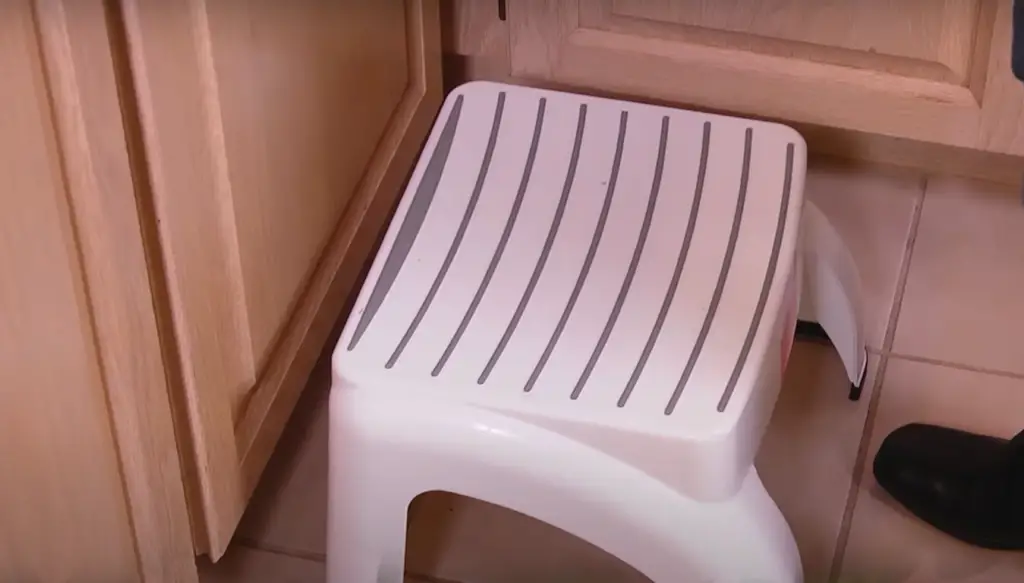
There are a few other factors that can contribute to falls in the kitchen, but these are some of the most common ones. Falls can lead to serious injuries, so it’s important to take steps to address these dangers in order to prevent falls and keep yourself safe. Below we will discuss the measures you can take to avoid falls in your kitchen.
How to Prevent Slip and Fall Accidents in the Kitchen
Preventing falls in the kitchen starts with being aware of the potential dangers. Take a look around your kitchen and identify any potential hazards. Once you know what to look for, you can start taking steps to mitigate the risks.
Clean your floor regularly
One of the simplest things you can do to prevent falls is to keep your floors clean. Dirt and debris can build up over time, making your floors slippery and more dangerous. Sweep or vacuum your floors regularly to remove any potential hazards. Always wipe the excessive moisture from the floor after mopping it. You can use a towel or a squeegee to remove any standing water. [1]
Remove spills right away
This leads us to our next point: if you see any spills, clean them up right away. Water, grease, and food can all make your floors slippery and more dangerous. Wet floors are the leading cause of kitchen falls, so it’s crucial that you remove any potential slipping hazards right away.
If you don’t have a mop, paper towels or a dishrag will work in a pinch. Just make sure to get the spill completely dry so there is no residual moisture that could cause someone to slip.
Don’t forget to clean under your appliances too! Spills can happen anywhere, so it’s important to regularly sweep and mop under refrigerators, ovens, and dishwashers. [1],[2],[3],[5]
Sit down whenever possible
Whenever possible, try to sit down when you’re working in the kitchen. Standing for long periods of time can be tiring and dangerous. If you’re feeling tired or dizzy, sit down before you start cooking.
It’s best to avoid wheeled furniture in the kitchen, as it can be easy to accidentally knock over. However, if you must use it, make sure to lock the wheels in place so it doesn’t move unexpectedly.
If sitting is not an option, make sure to take breaks often so you can rest your feet and legs.
Install good lighting
Many kitchens are not well lit, which can lead to falls. It is important to have good lighting in your kitchen, both for safety and for being able to see what you are doing. One way to add extra light is to install under-cabinet lighting. This will help illuminate the work area on your countertops and make it easier to see what you are doing.
When choosing where to install the lights, prioritize the strategic areas like the stovetop, countertops, and sink. These are usually the places where people spend the most time in the kitchen and where accidents are more likely to happen.
Make sure to keep your kitchen well-lit, both during the day and at night. You might need to invest in some additional light fixtures or bulbs with higher wattage. And if you have any windows in your kitchen, make sure they’re clean so that natural light can come in.
Install slip-resistant flooring
One of the most effective ways to prevent slips and falls in the kitchen is to install slip-resistant flooring. This type of flooring is designed to provide excellent traction, even when wet. There are a variety of slip-resistant flooring options available on the market, so be sure to do your research before making a purchase.
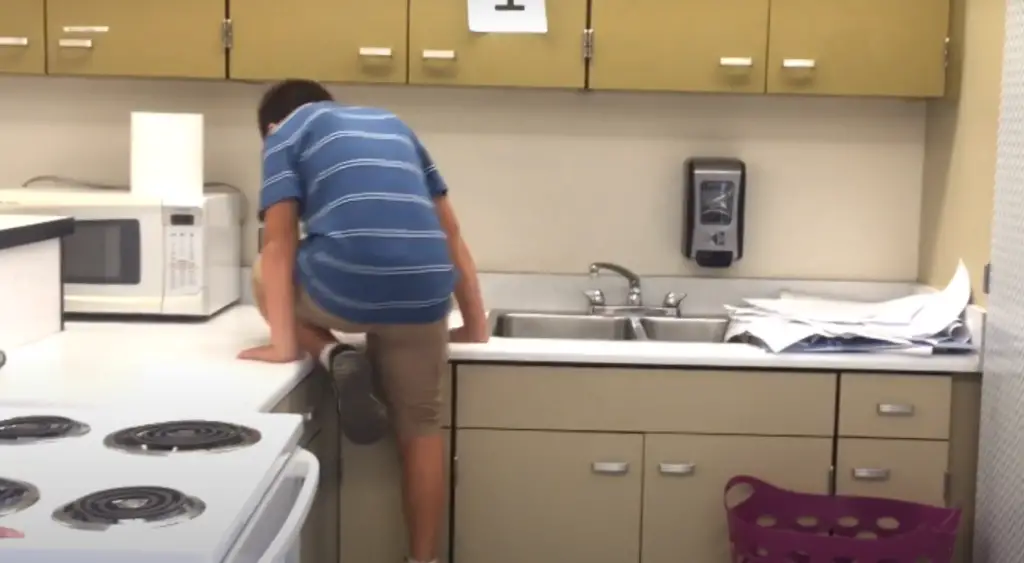
Slip-resistant flooring is an excellent investment for any home, but it’s especially important in the kitchen.
But what if you’re not ready to install new flooring? If you have tile or hardwood floors in your kitchen, make sure they are properly sealed and free of any potential hazards.
You can also make your kitchen safer by wearing shoes with good traction. Rubber-soled shoes are a good choice, as they provide excellent grip on slippery surfaces. If you have hardwood floors, consider investing in a pair of non-slip slippers to wear around the house.
Place slip-proof carpeting or mats in front of the sink and stove
One of the most common places for falls in the kitchen is in front of the sink and stove.
This will help to absorb any water that may be spilled, and it will also provide a stable surface for you to stand on when cooking. Carpeting or mats with a textured surface can help provide traction and reduce the risk of falling. Carpets will also help you if you have a shiny floor that gives you trouble.It’s best to opt-in for mats with slip-proof backing to keep them in place, especially if you have young children or pets who may be running around the kitchen.
Make sure your flooring is even
Another way you can do to prevent falls in the kitchen is to make sure your flooring is even. Uneven flooring is one of the leading causes of slip and fall accidents. If you have any loose tiles, bumps or cracks in your floor, make sure to fix them as soon as possible. You should also consider changing your flooring if it is excessively worn or damaged. [2]
Keep an eye on the cords
Kitchen is a place for various appliances and each one of them has a cord. It’s important to keep an eye on the cords and make sure they are not hanging over the edge of the counter or table. Another potential danger is leaving the cords on the floor where someone could trip over them. If possible, invest in cordless appliances or keep the cords away from the walking areas. [4]
Place essential items within easy reach
One of the simplest ways to prevent falls is to make sure that all essential items are within easy reach. This includes frequently used items like pots, pans, and utensils, as well as less frequently used items like spices and cooking oils.
If possible, keep these items on lower shelves so you don’t have to reach up high. Alternatively, use a step stool or ladder to safely access items that are out of reach.
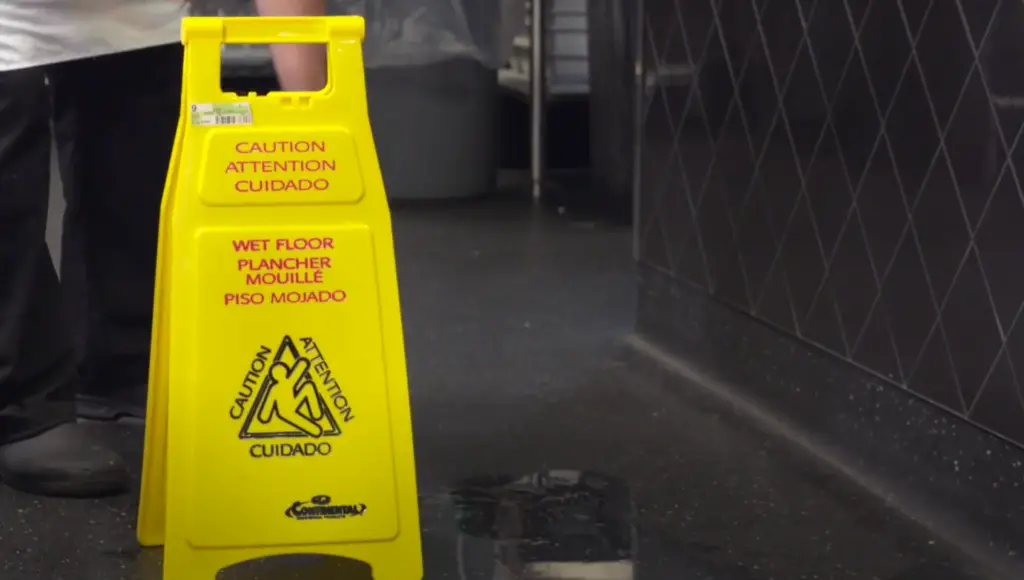
Another way to make your kitchen more user-friendly is to declutter the floor, countertops and tabletops. Not only will this free up valuable space, but it will also reduce the risk of tripping over clutter. Consider re-organizing your kitchen, getting rid of unused appliances, and using wall-mounted shelves to free up space. [2],[3],[5]
Preventing Falls in the Kitchen: Safety Tips and Measures
The kitchen is a bustling hub of activity, but it can also pose certain risks, including the potential for falls. To create a safer kitchen environment, it’s essential to take proactive measures and follow safety guidelines. Below, we outline various strategies and tips for preventing falls in the kitchen, ensuring that it remains a secure and enjoyable space for cooking and dining.
| Aspect | Information |
|---|---|
| Flooring | Choosing slip-resistant flooring materials and keeping floors dry and clean to prevent slips and falls. |
| Lighting | Ensuring adequate and well-distributed lighting to eliminate shadows and improve visibility. |
| Clutter Management | Organizing and decluttering countertops and kitchen surfaces to reduce tripping hazards. |
| Proper Footwear | Wearing appropriate, non-slip footwear while working in the kitchen. |
| Grab Bars | Installing grab bars near sinks and countertops to provide support and stability. |
| Stool and Ladder Safety | Using step stools or ladders safely when reaching high cabinets or shelves. |
| Child Safety | Implementing childproof measures, such as cabinet locks and safety gates, to protect young children from hazards. |
| Appliance Placement | Positioning kitchen appliances, such as toasters and microwaves, away from the edge of countertops to prevent accidental spills and burns. |
| Fire Safety | Practicing fire safety by keeping pot handles turned inward and using oven mitts when handling hot cookware. |
| Regular Maintenance | Maintaining kitchen equipment, such as faucets and appliances, to prevent leaks and malfunctions that could lead to falls. |
Explanation of the Table:
- Flooring: Addresses the importance of slip-resistant flooring and cleanliness.
- Lighting: Emphasizes the role of good lighting in preventing accidents.
- Clutter Management: Advises on decluttering to reduce tripping hazards.
- Proper Footwear: Recommends wearing non-slip footwear in the kitchen.
- Grab Bars: Highlights the use of grab bars for support.
- Stool and Ladder Safety: Discusses safe usage of step stools and ladders.
- Child Safety: Addresses measures to protect young children.
- Appliance Placement: Recommends safe appliance positioning.
- Fire Safety: Discusses fire prevention in the kitchen.
- Regular Maintenance: Emphasizes equipment maintenance for safety.
By implementing these safety measures and guidelines, you can significantly reduce the risk of falls in the kitchen, creating a safer cooking and dining environment for you and your family.
FAQ
What floors are considered slip-proof?
There are many factors to consider when determining which flooring is slip-resistant. The material, the texture, and the finish all play a role in preventing slips and falls.
Some of the most slip-resistant flooring options include: carpet, vinyl, linoleum, rubber, tile.
Slip resistant does not mean fall proof, however, so it’s still important to take necessary safety precautions.
How can slip and fall be prevented?
Kitchens can be dangerous places. spills, sharp objects, and slippery floors can all lead to serious injuries. Cleaning and wiping the floor regularly can help to prevent falls. In addition, placing mats or rugs in front of the sink and stove can help to keep you from slipping.
Another way to prevent falls is to be aware of your surroundings. Pay attention to where you are walking and what you are carrying. If you need to reach for something, make sure that you have a clear path. Also, be careful when carrying hot food or liquids. It is easy to spill these items, which can lead to burns or slips.
What are the common sources of slips, trips and falls in the kitchen?
The most common source of slips, trips and falls in the kitchen is wet or greasy floors. Other sources include loose rugs or mats, electrical cords, and cluttered surfaces.
Placing non-slip mats near all wet areas in the kitchen, such as the sink and stove, can help prevent slips. Keeping the floors clean and dry will also help reduce the risk of falls.
It is also important to keep electrical cords out of walkways, and to tidy up cluttered surfaces. Falls are more likely to happen when there are obstacles in your way.
How can I make my kitchen floors less slippery?
To make your kitchen floors less slippery, consider using slip-resistant mats or rugs, choosing flooring materials with good traction, and keeping the floors clean and dry. Additionally, you can apply anti-slip treatments or coatings to your existing floors.
What footwear is recommended for preventing falls in the kitchen?
Wear footwear with non-slip soles in the kitchen to reduce the risk of falls. Shoes with rubber or non-skid soles provide better traction on slippery surfaces, helping to prevent accidents.
Are there specific kitchen layouts that can reduce the risk of falls?
Yes, a well-organized kitchen layout can help prevent falls. Keep commonly used items within easy reach, install proper lighting, and avoid clutter on countertops and floors to create a safer environment.
What are some tips for safely using step stools or ladders in the kitchen?
When using step stools or ladders in the kitchen, ensure they are stable and in good condition. Always maintain three points of contact when climbing or descending, and never overreach. Use these tools cautiously to access high shelves or cabinets.
How should I store kitchen utensils and appliances to prevent accidents?
Store kitchen utensils and appliances in designated areas, and keep them organized. Secure heavy items on lower shelves or cabinets, and use safety latches on cabinet doors to prevent them from swinging open unexpectedly.
What are the best practices for cleaning up spills promptly in the kitchen?
To prevent slips and falls, clean up spills as soon as they occur. Use absorbent materials like paper towels or cloth to wipe the spill, and then follow up with a damp mop to ensure the area is completely dry.
How can I make sure my kitchen is well-lit to prevent accidents?
Ensure your kitchen is well-lit by installing bright overhead lighting and under-cabinet lighting. Replace burnt-out bulbs promptly, and consider motion-activated lights to illuminate high-traffic areas automatically.
What safety measures should I take when using knives in the kitchen?
To prevent accidents with knives, use a sharp blade, cut away from your body, and keep your fingers tucked in. Store knives in a knife block or on a magnetic strip, and always keep them out of reach of children.
Are there any precautions to take when using kitchen appliances?
When using kitchen appliances, read the instruction manuals carefully. Ensure they are in good working condition, and use safety features like appliance locks if you have young children in the house. Unplug appliances when not in use.
How often should I check and maintain my kitchen’s safety features?
Regularly inspect and maintain safety features in your kitchen, such as handrails, cabinet locks, and non-slip mats. Check for wear and tear, and replace or repair them as needed to ensure they continue to provide protection against falls.
Useful Video: Fall Prevention: Kitchen
Conclusion
Kitchen is a common place for accidents since it’s where we cook, eat and sometimes do homework. But did you know that it can also be a dangerous place? Water, grease and cords are just some of the things that can make you slip and fall. That’s why it’s essential to take precautions in the kitchen and learn how to prevent falls.
Cover all the potentially slippery surfaces by using mats or rugs with a good grip and wear shoes with good traction. In addition, keeping a bright light on while you work and cleaning up spills as soon as they happen will also help to reduce your risk of slipping and falling. While there’s no guarantee that following these tips will prevent every fall in the kitchen, they still can make your space a bit safer. Thanks for reading!
References:
- https://www.prudentialuniforms.com/blog/restaurant-managers-heres-how-to-prevent-slips-trips-and-falls-in-the-kitchen/
- https://seniorsafetyadvice.com/kitchen-fall-prevention-for-seniors/
- http://neurologicalsolutions.org/six-top-ways-avoid-falls-kitchen/
- https://www.hgtv.com/lifestyle/clean-and-organize/10-simple-steps-to-kitchen-safety
- https://www.grayingwithgrace.com/how-to-prevent-falls-in-the-kitchen/











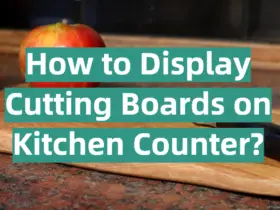

Leave a Reply